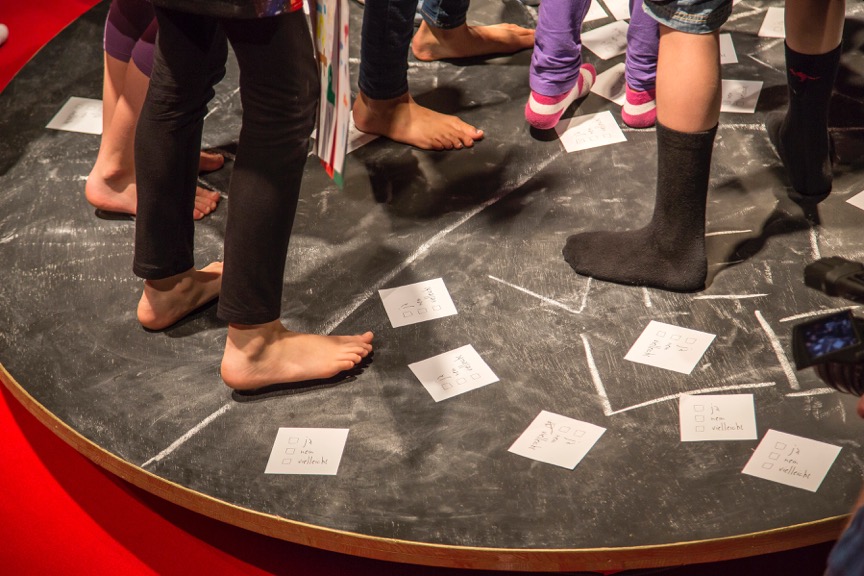Copyright: Thies Rätzke
Hannah Kowalski, Playing Decision-Making, 2014, Hamburg
Hannah Kowalski, Entscheiden Spielen, 2014, Hamburg
Whether in the Bundestag – the German parliament – or in the classroom, anywhere people live and act together, decisions are constantly being made. Shards of clay, laptops, and shows of hands are just a few of the many media that are used in decision-making.
How do you coordinate individual interests if you want to act together? In most cases, formal decision-making procedures such as the use of ballot papers or hand signals are used to decide this question. The performative elements of these processes are clear and established through continuous use. However, does it make a difference whether you use a ballot or, for example, vote by choosing positions on an unstable platform? And if that is the case, could a theatrical examination of these processes be used to find new decision-making systems that correspond more closely to our current democratic spirit?
In the lecture performance Playing Decision-Making, Hannah Kowalski wanted to find out if the motivation to take part in collective decision-making increases when using different kinds of decision-making procedures. In order to inquire into voting processes, she tested different decision-making formats in the FUNDUS THEATER/Theatre of Research with children and adults on as-if decisions. The lecture performance focused on the production of knowledge regarding different decision-making tools: Kowalski informed the audience about her research, explicitly addressed the participants as experts and asked them to judge the presented procedures: voting by lights, voting by standing in different fields on the ground, voting with laser pointers, voting with gestures, voting on an unstable decision-making platform (Entscheidungsebene) and voting with a digital online tool.
One procedure after the other was staged and tested. A questionnaire was added, in which the participants were asked to evaluate the different procedures. The evaluation of the questionnaires showed similar results from her previous findings: The debates and negotiations that were enabled by the different tools where rated as the most important aspects of the procedures. The playful character of the tools made it possible to create an Entscheidungsspielraum (space for decision-making). Making collective decisions was not only about ‘yes’, ‘no’ or ‘maybe’, but about the in-betweens, discussions, negotiations and attempts of persuasion. The evaluation of the interaction and the questionnaire from Playing Decision-Making showed that different tools were linked to specific forms of decision-making.
Researchers: Hannah Kowalski
Co-researchers: Tobias Quack, Greta Granderath
Participants: Arthur Bender from Rudolf-Roß School, Cecilia Ussher from Marie-Beschütz-School, Kai van Eikels
Collaboration: Rudolf-Roß Grundschule


